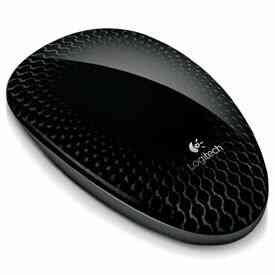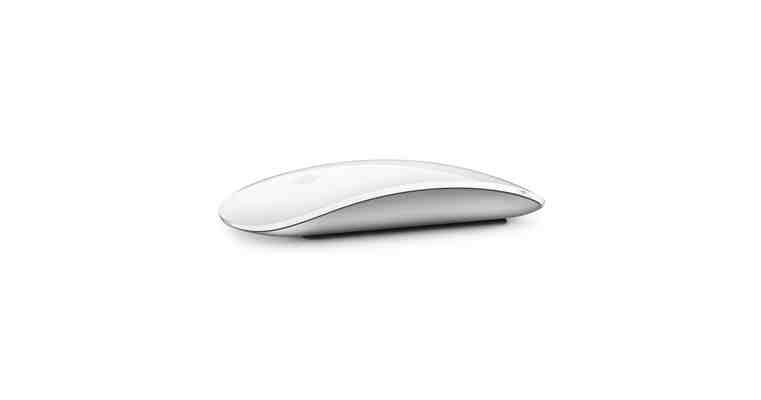How to Buy a Computer Mouse
As far as your PC goes, the keyboard and mouse are your most direct connections to your PC, and the most hands-on aspect of your desktop. In its most basic form, a computer mouse is a simple device, a sensor on the bottom with two buttons on top, and a scroll wheel. But while all mice are simple in concept, this basic pointing device has found several unique incarnations. Thus, it pays to know what distinguishes one from another when you go shopping for a new mouse.

Types of Mice
The mouse may be a simple device in concept, but over time several categories of mice have evolved, each made for different uses. The most common of these are mainstream desktop mice, designed for use with a desktop or laptop PC at a desk or table. Aside from the usual right and left mouse buttons, common features include a scroll wheel, and may also offer additional thumb buttons that let you navigate forward and back in your Web browser.
Travel mice offer many of these same features, but come in a smaller size, as seen with the Microsoft Sculpt Mobile Mouse($17.99 at Amazon)(Opens in a new window). They're designed to fit easily into the pocket of a backpack or laptop bag. But while the small size might fit well into a bag, travel mice tend to be too small for human hands—you can use them just fine, but become uncomfortable in long-term use. Generally speaking, travel mice are wireless and battery powered, so you may want to bring along a spare set of triple-A's.
Gaming mice, like the Logitech G602 Wireless Gaming Mouse($182.40 at Amazon)(Opens in a new window), take the basic mouse concept and then amplify every element to extremes. Depending upon the style of game that the mouse is intended for (MMORPG, first-person shooter, real-time strategy) you'll see a variety of specialized features. What these mice have in common is a combination of high-performance parts—laser sensors, light-click buttons, and gold-plated USB connectors—and customization, like adjustable weight, programmable macro commands, and on-the-fly DPI switching. For non-gamers, these features are overkill; for dedicated gamers, they provide a competitive edge.
Ergonomic designs put all of the usual mouse functions into a design that puts your hand into a neutral position. Designed reduce the stresses that cause carpal tunnel and repetitive stress injury, ergonomic mice—like the Penclic Bluetooth Mouse B2($97.79 at Amazon)(Opens in a new window)—may look unusual and take some getting used to, but they do alleviate some very real problems.
Connectivity Options
The simplest way to connect a mouse to your PC is through a wired USB connection. Computer mice are usually plug-and-play devices, with no additional software to install (with the exception of some gaming mice), meaning that plugging in the cable is all of the setup you'll need to deal with. Unlike wireless alternatives, a wired device will draw its power from the USB, so there are no batteries to worry about. Wired connections are also preferred for gaming use, as wired connections are free from the lag and interference issues that wireless options are prone to.
If you want more freedom and less cable clutter on your desk, however, it's hard to beat a wireless mouse. Instead of a wired connection, wireless mice transmit data to your PC through one of two primary means: an RF connection to a USB receiver, or via Bluetooth. Both have their pros and cons, but if you want to reduce the number of cables on your desk and gain the flexibility to use your mouse unhindered—or even across the room—wireless is the way to go.
Most wireless computer mice, like the Logitech Wireless Mouse M560($39.99 at Logitech)(Opens in a new window), connect to the PC via the same 2.4 GHz wireless frequencies used for cordless phones and Wi-Fi Internet. A small, dime-sized USB dongle—small enough to plug in and forget about—provides the link to your PC. Companies use proprietary connections like these because they allow optimal battery life. These USB dongles also provide connectivity to more than one device, meaning that you can use the single adapter for your wireless mouse—or mice, if you have one at work and one at home—as well as one or more keyboard, assuming that all are the same brand.
Bluetooth options are regaining popularity of late, largely because they don't monopolize a USB port, and because the stable, easy-to-manage Bluetooth connections are ideal for use with more mobile devices, like ultrabooks and tablet PCs. In regular use, a Bluetooth connection gives you roughly thirty feet of wireless range, but may not match the battery life offered by devices with a USB dongle. New innovations, such as motion sensors tied to power and connection management improves the battery life over older Bluetooth devices, which maintained an always-on link, draining battery quickly.
Sensors and Sensitivity
Sensors and Sensitivity
The humble trackball has been superseded by two types of light-based motion sensors, optical (or LED) sensors, and laser sensors. Unlike previous mechanical tracking options, light-based sensors have fewer issues with dust and dirt, and the absence of moving parts means that there are fewer failures.
Optical sensors pair a glowing LED light—often in red, blue, or infrared—with a small photo sensor, tracking movement by repeatedly imaging the surface below (the frequency of imaging is called the polling rate, and numbers in the hundreds every second) the mouse, translating any movement into cursor movement. Because of the imaging sensor used, optical mice are less prone to problems caused by lifting the mouse in use or mousing on an uneven surface.
Laser mice operate in a similar way, but use an infrared laser diode instead of an LED. This allows for greater sensitivity (measured in dots per inch, or DPI), and faster polling rate. The one drawback is that the increased sensitivity makes laser mice more finicky about the surface they are used on. Premium gaming mice generally use laser sensors, but are recommended for use with mouse pad surfaces that are made specifically for gaming.
In order to offer the higher sensitivity of a laser sensor and the versatility of an optical mouse, some mice use both in tandem. Gaming mice also offer sensitivity adjustment, allowing you to shift from high DPI for tight cursor control circumstances (such as lining up a sniper's shot) to low DPI (and thus faster cursor movement) for melee combat and run-and-gun situations.
For more guidance in selecting the mouse that's right for you, check out The Top 10 Best Computer Mice.
Magic Mouse - White Multi-Touch Surface
Magic Mouse is wireless and rechargeable, with an optimized foot design that lets it glide smoothly across your desk. The Multi-Touch surface allows you to perform simple gestures such as swiping between web pages and scrolling through documents.

The rechargeable battery will power your Magic Mouse for about a month or more between charges. It’s ready to go right out of the box and pairs automatically with your Mac, and it includes a woven USB-C to Lightning Cable that lets you pair and charge by connecting to a USB-C port on your Mac.
Head Mouse Assistive Technology
The Smyle Mouse™ is the next generation in head mouse assistive technology. It includes traditional head mouse functions as well as a face gesture based clicker, adaptive switch emulator and a dwell clicker, all bundled together in one convenient software package. It allows complete hands-free and voice-free mouse control of devices running Microsoft Windows® 7, 8 or 10.
Smyle Mouse provides head controlled mouse functions that are powered by simple facial gestures that can be tracked by a regular web-camera. This means that no additional accessories, hardware mounts or messy wires are required!
No expensive cameras — 3D or depth-sensing or infrared cameras not required.
— 3D or depth-sensing or infrared cameras not required. No adaptive switches — head, finger, foot or other assistive switches not required.
— head, finger, foot or other assistive switches not required. No need to wear anything on the head or face — glasses, headsets and not even stickers!
— glasses, headsets and not even stickers! No sipping, puffing or biting — No sip / puff / bite switches to put in the mouth — perfectly sanitary!
Our Award-winning and Patented* assistive head mouse technology can indeed improve the lives of people who experience difficulty or pain in control of their hands or arms.
*Note: Smyle Mouse head mouse is based on US Patents 9013164, 9785242, 10137363, 10191558 and 10884493.











